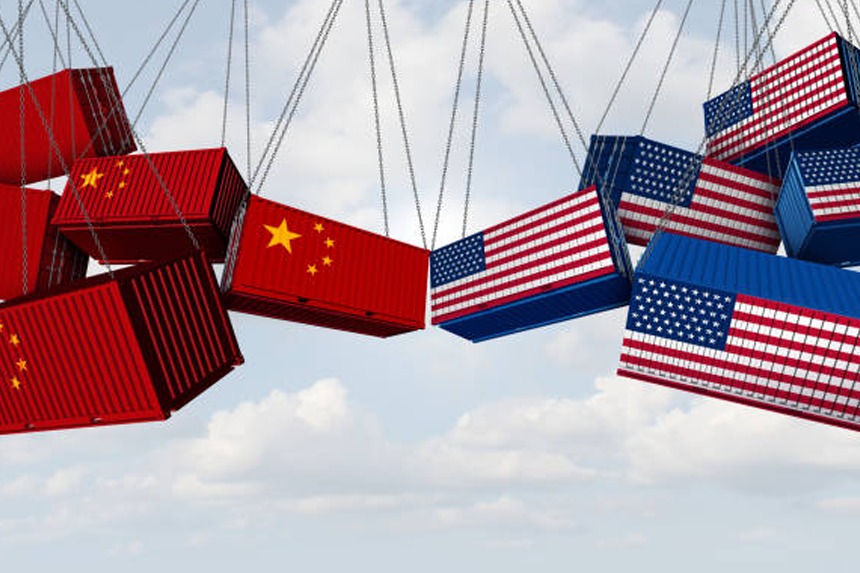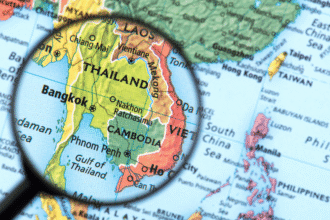As companies and governments all throughout Southeast Asia adjust to growing tensions between two economic titans, the US-China Trade War is redefining global business. Manufacturers all across Vietnam, Malaysia, Indonesia, and Thailand faced both possibilities and problems when the United States taxes Chinese imports during Donald Trump’s presidency.
- Why Are Vietnamese Exporters Enmeshed in the US-China Trade War Impact on Southeast Asia Crossfire?
- How are US tariffs redefining the position of Southeast Asian nations?
- Can Southeast Asia afford to choose between the United States and China?
- How Are Local Companies Changing to Match New Global Trade Pressures?
- Which policies will enable Southeast Asia to overcome the effects of the US-China Trade War?
- In essence, uncertainty becomes opportunity.
Entrepreneur Hao Le filled in the void created by limited Chinese exports to the United States, therefore developing his successful company, SHDC Electronics, in Vietnam.m Millions of phone and computer accessories worth of exports from his company are sent monthly currently. Le must so confront the terrible reality of possible collapse given the possibility of a 46% U.S. tariff on Vietnamese imports. “This would be disastrous for our company,” he says. “Chinese products are so cheap that competing in the local Vietnamese market is impossible.”
Why Are Vietnamese Exporters Enmeshed in the US-China Trade War Impact on Southeast Asia Crossfire?
The first wave of U.S. tariffs on Chinese imports unexpectedly set Vietnamese exporters on a road. American businesses started looking for substitutes for their long-standing Chinese suppliers, and Vietnamese manufacturers jumped right in. But as U.S. trade policy develops, those same companies can suddenly find themselves deprived of the very prospects that drove their expansion.
Le’s story captures a more general conundrum for companies throughout Southeast Asia. Supply chains were rebuilt to rely more on nations like Vietnam as Chinese commodities lost competitiveness in the United States because of high taxes. The expansion was astonishing. However, the US-China Trade War’s effects on Southeast Asia have since turned into a two-edged sword, since fresh tariffs might close those doors and reverse the trend.
How are US tariffs redefining the position of Southeast Asian nations?
American tariffs changed not only the paths of trade but also the position of Southeast Asia in the world economy. Countries like Vietnam, Malaysia, and Indonesia quickly attracted businesses trying to cut reliance on Chinese manufacturing. But the quick change exposed weaknesses, particularly for small producers.
Governments are trying to carve out their niche in world trade while new tariffs targeted at the area cause upheaval. While Thailand is negotiating high level with Washington to prevent a 36% levy, Vietnam’s officials have promised to cut taxes on U.S. goods. These actions show how profoundly the US-China Trade War Impact on Southeast Asia hasimpactedd strategic planning for national economies as well as companies.
Can Southeast Asia afford to choose between the United States and China?
Nations in Southeast Asia find themselves walking a tightrope. China is its biggest trading partner, on one side. Conversely, the United States is a major exporting target. The US-China Trade War Affects Southeast Asia makes people cautious decisions since both countries are vital to preserving economic stability.
When Malaysia’s Trade Minister, Tengku Zafrul Aziz, declared, “We can’t choose, and we will never choose between China and the U.S.,” he aptly captured this difficulty. Taking sides is not a good approach given the magnitude of commerce and investment moving in both directions. Rather, these nations have to find balance, choose their pathways, and control the hazards connected with superpower rivalry.
How Are Local Companies Changing to Match New Global Trade Pressures?
The manufacturing scene of Southeast Asia shows the effects of the US-China Trade War already. From textiles to electronics, surges of inexpensive Chinese imports designed for the U.S. market but diverted into Southeast Asia have pushed industries under pressure.
For the past two years, almost 100 factories in Thailand have closed each month under pressure. The Indonesian textile industry has also suffered; around 250,000 people have been laid off as 60 garment companies, including the once-dominant Sritex, close.
Still, no story is one of decline. Despite their own set of difficulties, Malaysian glove makers have kept a competitive advantage. “Our products remain more reasonably priced than Chinese substitutes even with possible U.S. tariffs,” says Oon Kim Hung, President of the Malaysian Rubber Glove Manufacturers Association. Such flexibility emphasizes some industries’ resiliency in front of the US-China Trade War Impact on Southeast Asia.
Which policies will enable Southeast Asia to overcome the effects of the US-China Trade War?
Under these demands, governments of Southeast Asia are implementing a range of policies meant to protect local businesses and maintain development. Among these tactics are aggressive diplomatic discussions, strengthened customs rules, and anti-dumping taxes.
For example, Vietnam has temporarily levied anti-dumping taxes on Chinese steel goods. Thailand has also imposed extra levies on low-value imports, while Indonesia has proposed hefty tariffs on a variety of Chinese products. These steps are meant to level the playing field for local producers, who have long battled the influx of very inexpensive Chinese substitutes.
Policymakers understand, therefore, that tariffs by themselves cannot fix the fundamental problem. Diversification is crucial. Southeast Asian governments can better negotiate the continuous changes brought about by the US-China Trade War Impact by extending their range of export markets and lowering overreliance on either China or the U.S.
Businesses are also adjusting in parallel. Entrepreneurs like Hao Le are aggressively developing new partnerships with American customers ready to cut out Chinese suppliers. “Before, choices about changing suppliers might take months. These decisions are being taken now in a few days, Le notes. Despite the present challenges, this rapid speed of change highlights the region’s increasing relevance in world supply chains.
In essence, uncertainty becomes opportunity.
The US-China Trade War has created opportunities as well as disturbances for Southeast Asia. Although tariffs and changing alliances bring uncertainty, they also provide opportunity for strategic innovation, local businesses to flourish, and more robust regional collaboration.
In the end, the road ahead will call for from both companies and legislators insight, adaptation, and resilience. Although negotiating this difficult moment may not be simple, Southeast Asia can become a more autonomous and balanced participant in the world economy with the correct policies.








